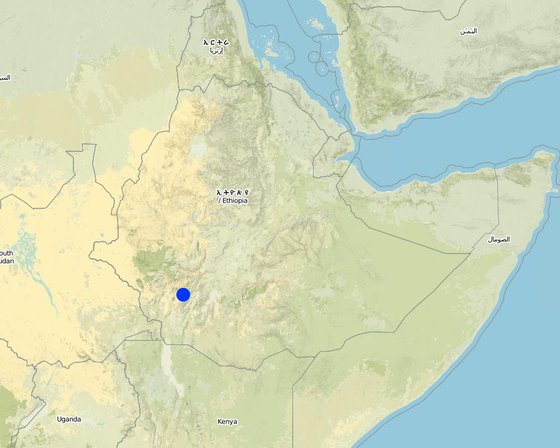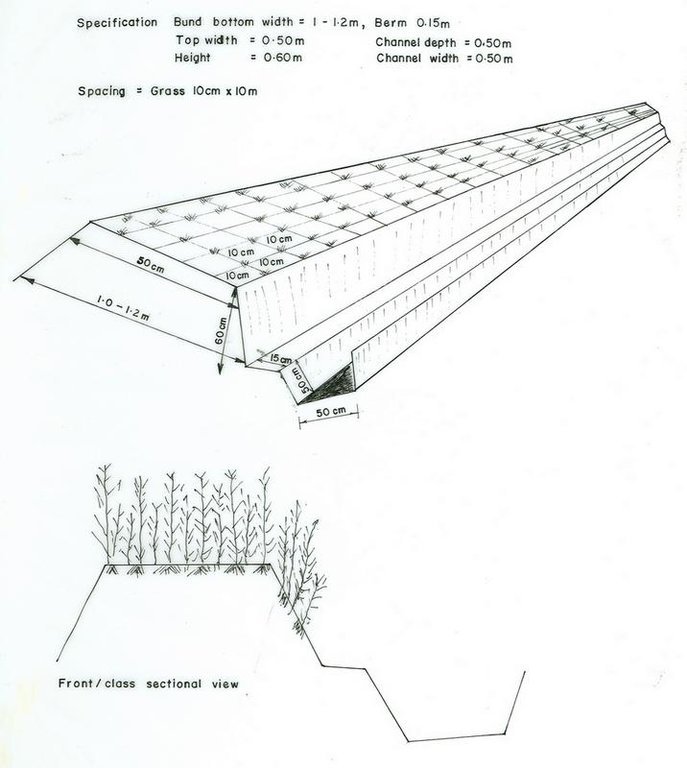

Desho grass is established by planting tillered cuttings. It establishes easily with little soil moisture. It is a perennial herbaceous grass which has massive fibrous root system that anchors the plant to the bind. It provides better cover to the bund and establishes agressively. The growth is upright with a growth potential of 90-120 cm depending on the fertility of the soil and regenerates quickly. It can grow and mature (ready for harvesting) at least once in a month and it requires only one seasontime rain to cover the whole bund.
Purpose of the Technology: The purpose of Desho grass is to stablize the bund and provide palatable grass for livestock.
Establishment / maintenance activities and inputs: Desho grass can be established/regenerate by tiller splitting and planting. The soil should be moist during establishment of Desho grass.
Natural / human environment: Desho grass can grow at 1500-2800 m asl and its best performs at an altitude of 1700-2800m asl.

ទីតាំង: Sorro/Lintala, Ajacho, SNNPR, ប្រទេសអេត្យូពី
ចំនួនទីកន្លែងបច្ចេកទេស ដែលវិភាគ:
ការសាយភាយនៃបច្ចេកទេស: ត្រូវបានផ្សព្វផ្សាយត្រឹមតំបន់មួយ (approx. 10-100 គម2)
តើស្ថិតក្នុងតំបន់ការពារអចិន្ត្រៃយ៍?:
កាលបរិច្ឆេទនៃការអនុវត្ត: តិចជាង 10ឆ្នាំមុន (ថ្មី)
ប្រភេទនៃការណែនាំឱ្យអនុវត្តន៍៖





| បញ្ជាក់ពីធាតុចូល | ឯកតា | បរិមាណ | ថ្លៃដើមក្នុងមួយឯកតា (Birr) | ថ្លៃធាតុចូលសរុប (Birr) | % នៃថ្លៃដើមដែលចំណាយដោយអ្នកប្រើប្រាស់ដី |
| កម្លាំងពលកម្ម | |||||
| Labour | ha | 1,0 | 8,0 | 8,0 | 100,0 |
| សម្ភារៈ | |||||
| Machine use | ha | 1,0 | 1,21 | 1,21 | |
| Tools | ha | 1,0 | 1,7 | 1,7 | |
| សម្ភារៈដាំដុះ | |||||
| Seedlings | ha | 1,0 | 3,2 | 3,2 | |
| ថ្លៃដើមសរុបក្នុងការបង្កើតបច្ចេកទេស | 14.11 | ||||
| ថ្លៃដើមសរុបក្នុងការបង្កើតបច្ចេកទេសគិតជាដុល្លារ | 1.64 | ||||
land productivity is improved
desho grass became ample forage resources
desho grass became ample forage resources
from sells of Desho grass and animal product
strengthen group working, e.g. community development committee (CDC)
Introduce strong approach, Integrated Watershed Management
use of Desho grass for bund stablization
excess water is retained behind the bund and infiltrate
Desho grass cover the bund
គុណភាពមុន SLM: 70
គុណភាពក្រោយ SLM: 4
bund stablized with Desho grass is effctive in conserving the soil
reduce flooding